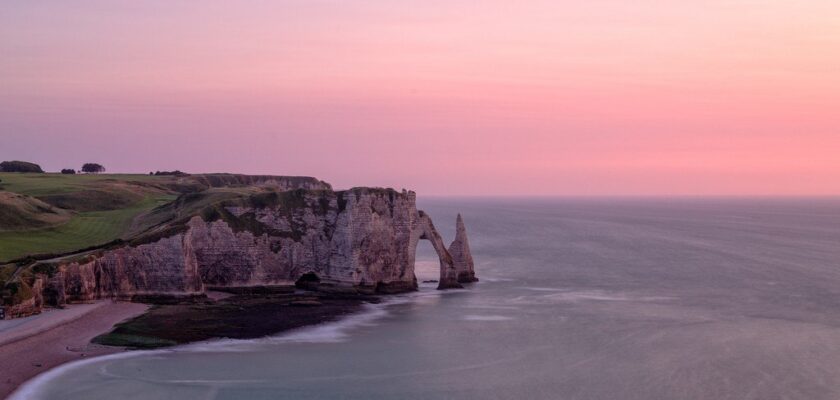Cliffs of Etretat
The high white cliffs are as familiar to the French as the white cliffs of Dover are to the British.
The Cliffs of Etretat are one of the most picturesque places on the Alabaster Coast of France. The cliffs near the town of Etretat are just over 80 meters high, and further north, towards Fecan, they reach 100-120 meters. The rocks here are composed of Cretaceous limestone interspersed with layers of silica. Sea water gradually dissolves the limestone, which formed the bizarre cliffs and arches, and polishes the flint – that’s where the pebbles on the beach came from. Another important factor in forming this quaint beach is rainwater, which seeps into the chalk and gradually erodes it – this explains the numerous screes.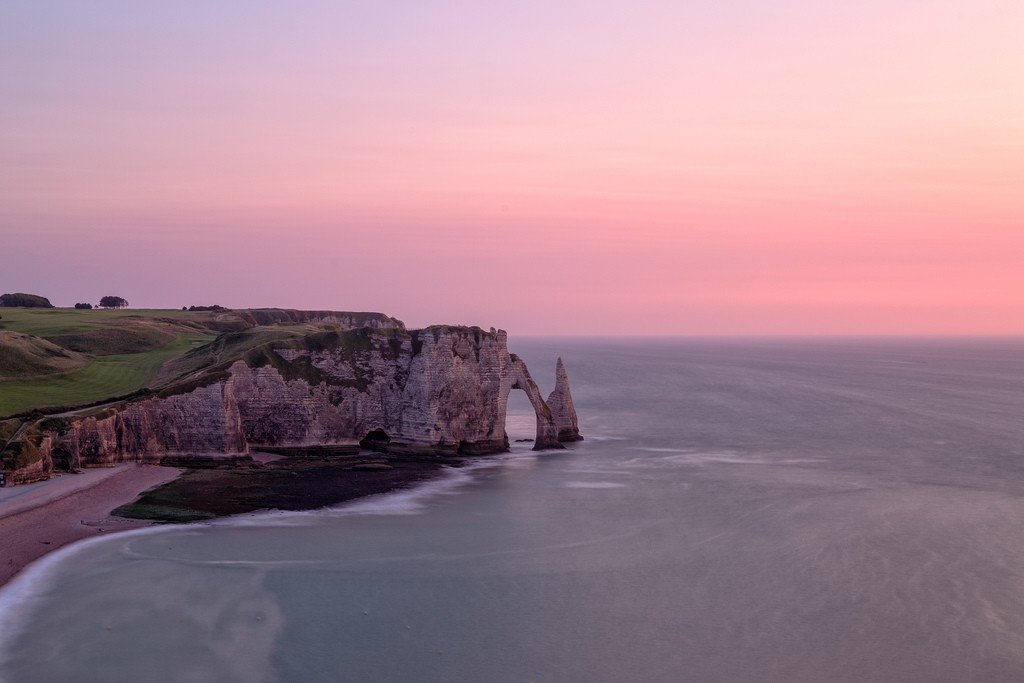
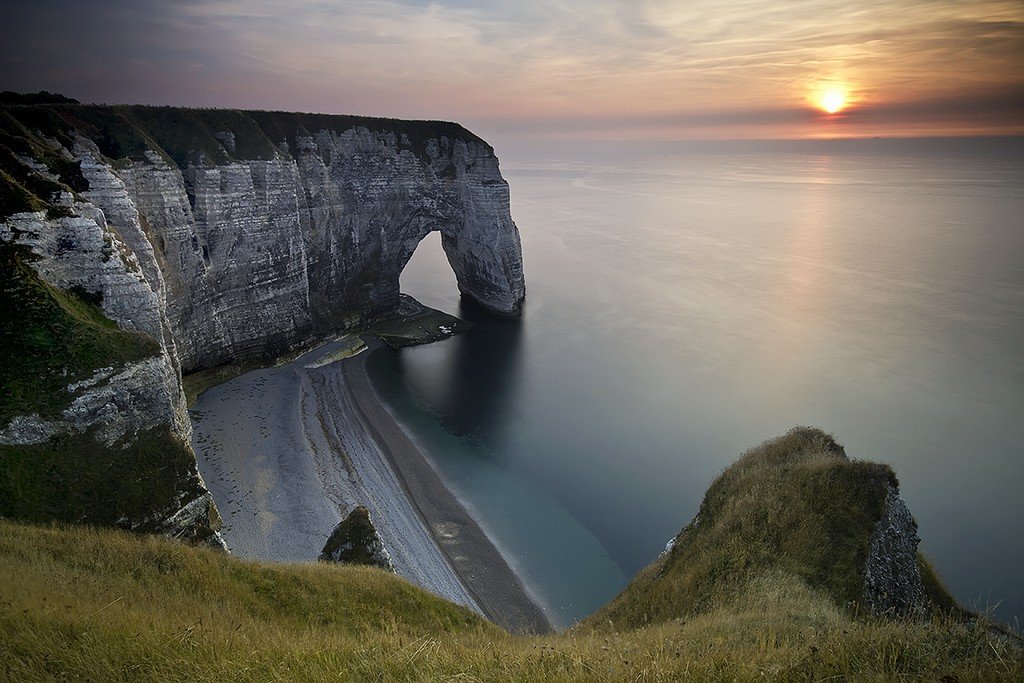
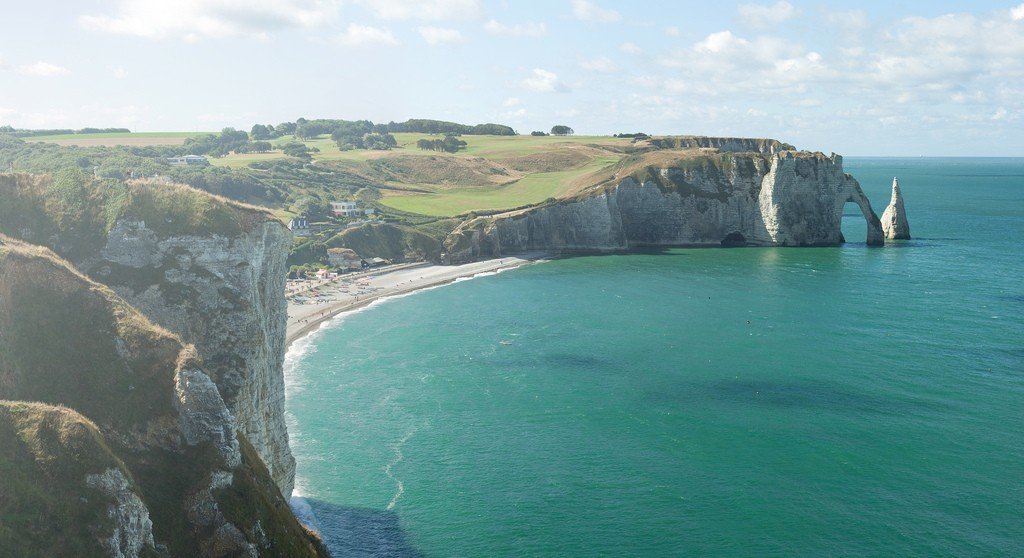
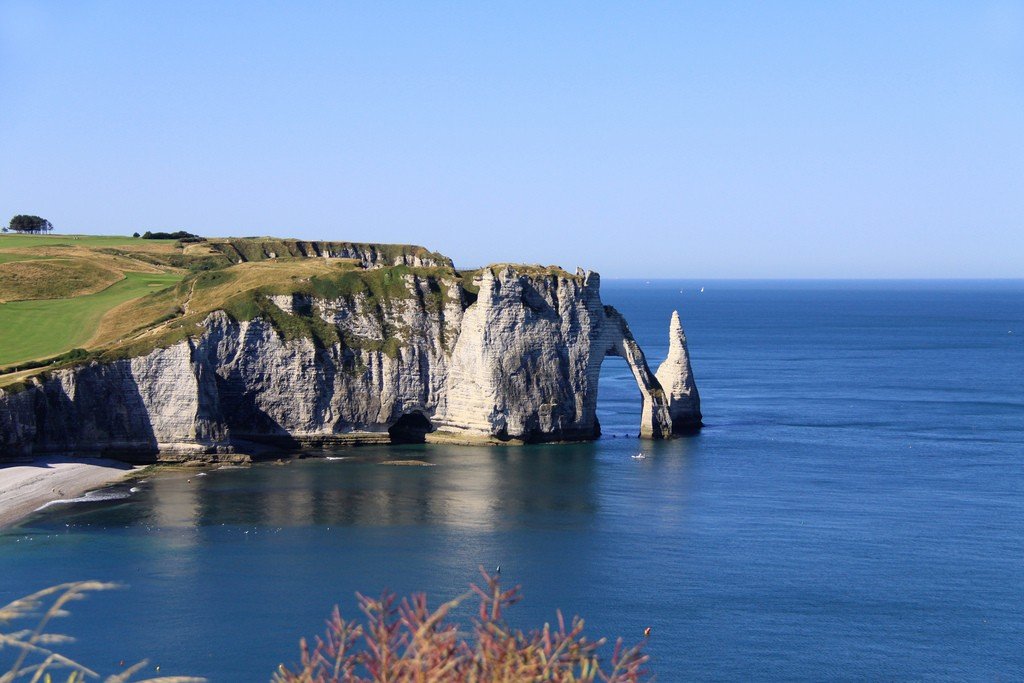
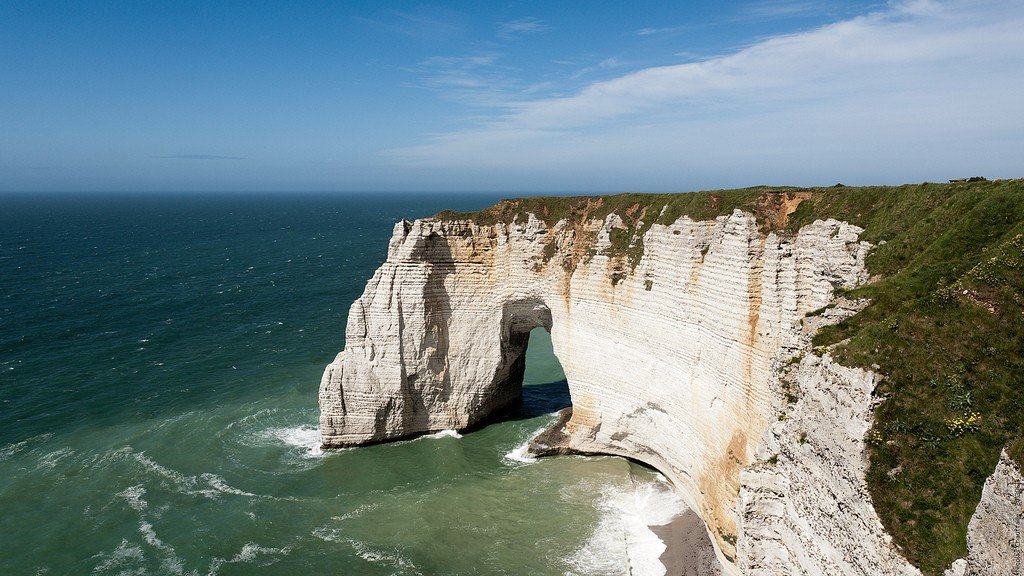
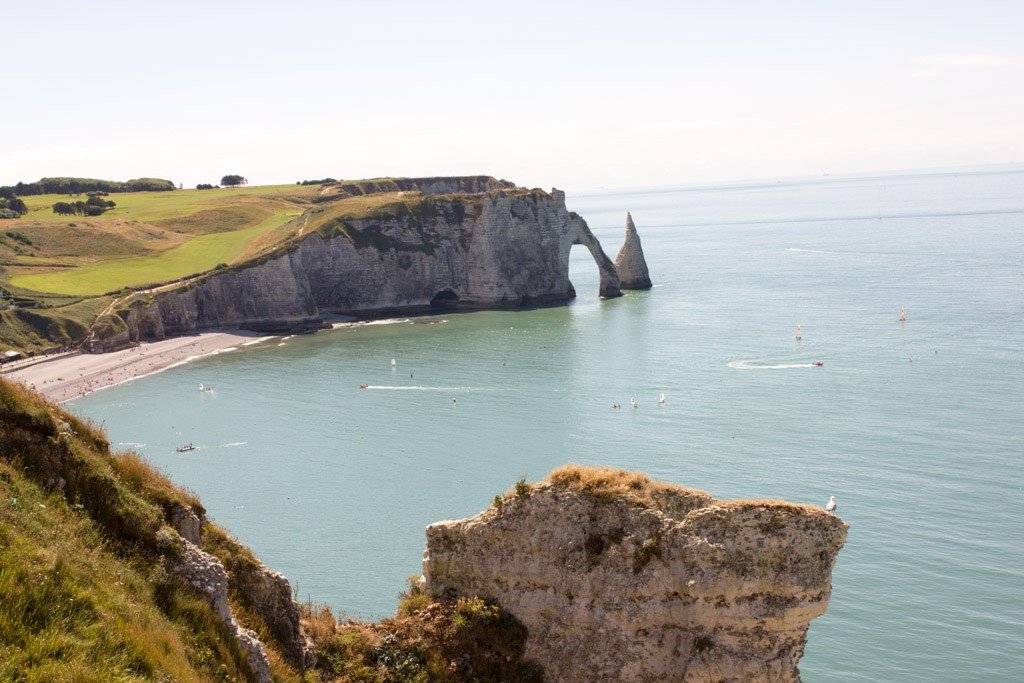
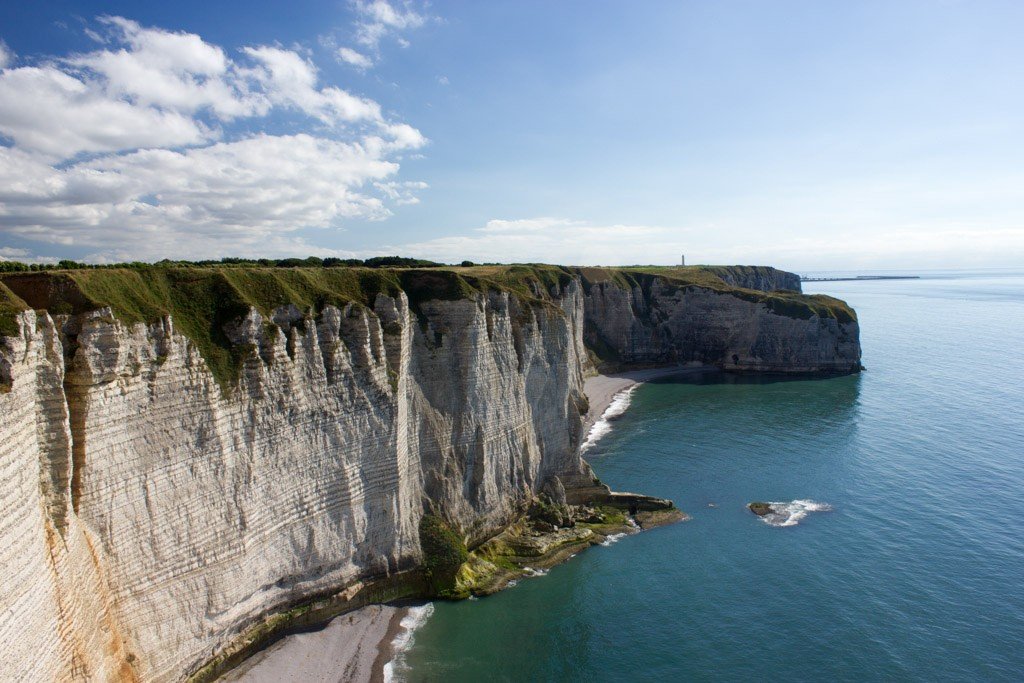
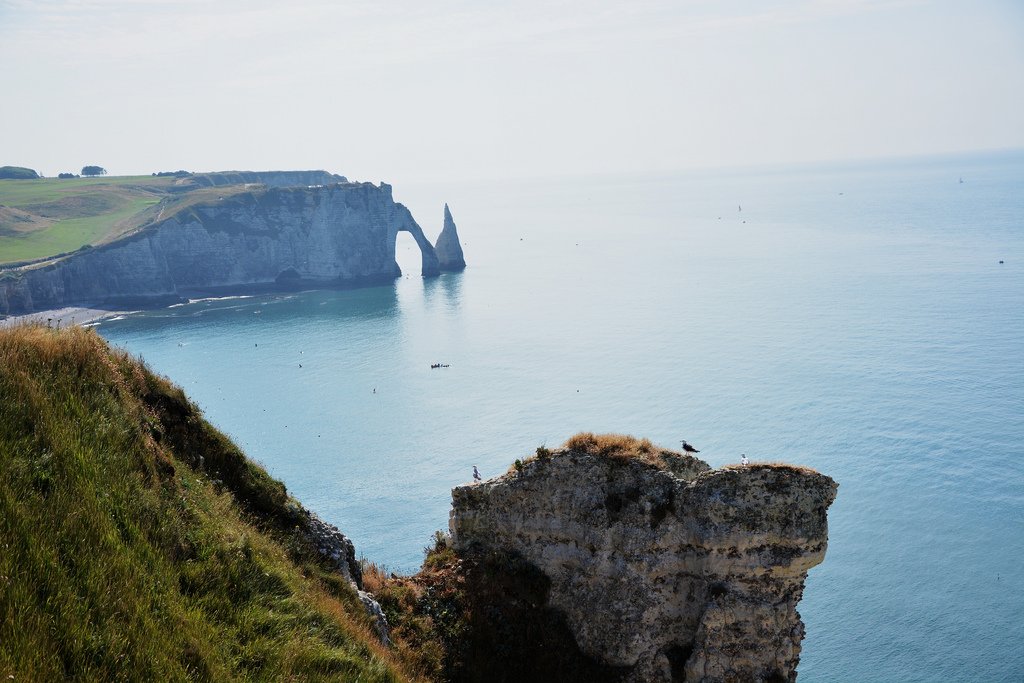
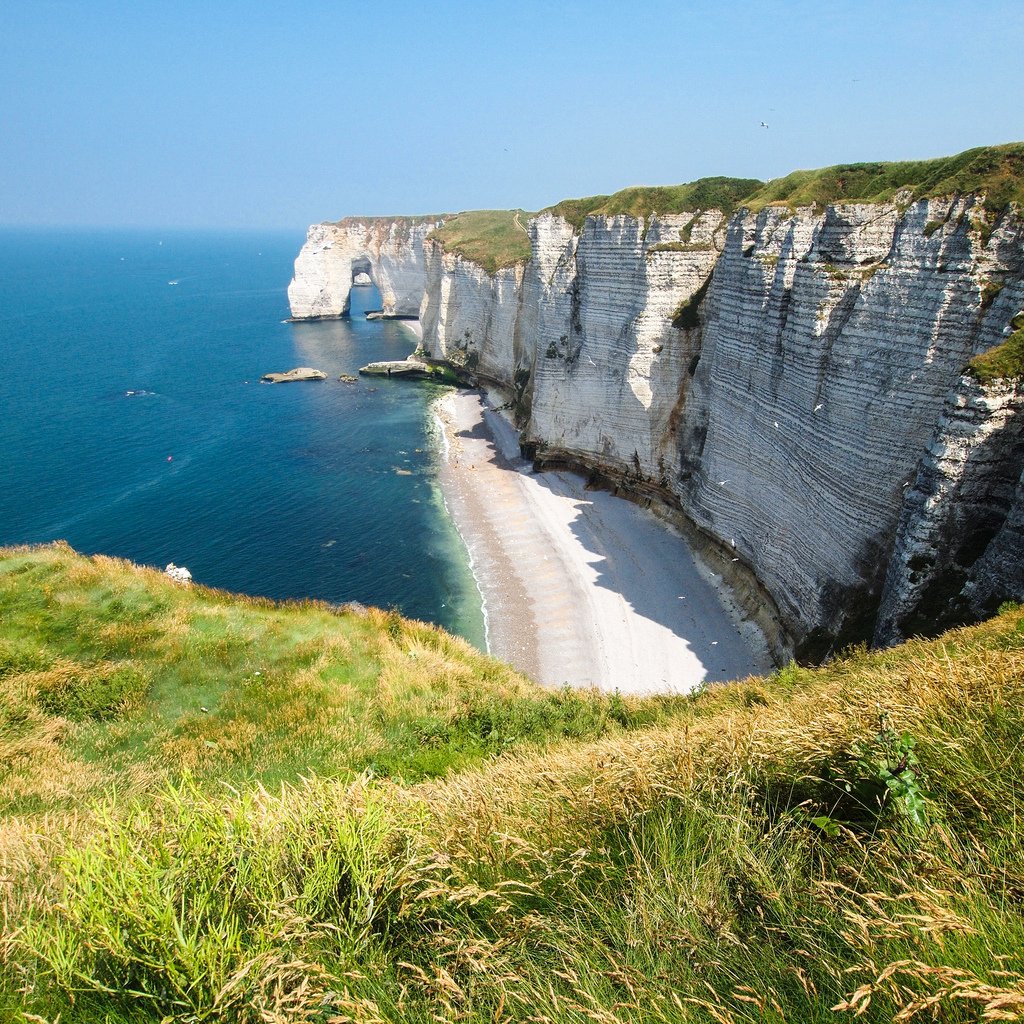
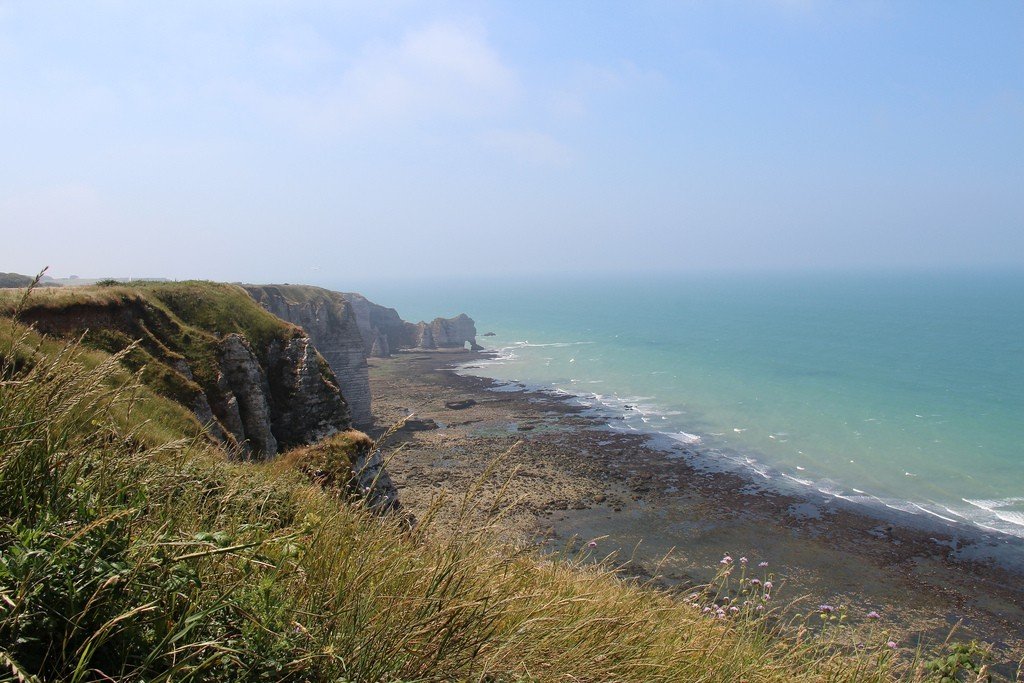
General information
Since the 19th century, artists and writers have gathered in Etretat. Victor Hugo and Guy de Maupassant, Courbet, Degas and Matisse all came here, but it was Alphonse Carr, editor of Le Figaro, who made the neighborhood fashionable among Parisians. Today it is a small popular summer resort, but in winter it becomes the quiet and sleepy place it has always been, and the wide boulevards and pebbly beaches are empty of all but solitary tourists at this time.
.The western cliff, Falaise d’Aval, has become a giant arch that the sea has hewn out of the soft chalk cliffs. You can climb to the top via a path and enjoy a fantastic view of the rock formations, including the “Igla”, a 700m high cliff that rises from the sea. At the top of the eastern cliff is a tiny chapel, behind it is a museum and a monument in the shape of a forked bird bone, erected in honor of two French aviators, Coly and Nanjesser. They made the first attempt to cross the North Atlantic in 1927, and went missing just off the coast. At low tide, you can see oyster shoals and walk through a natural archway from one beach to another.
.